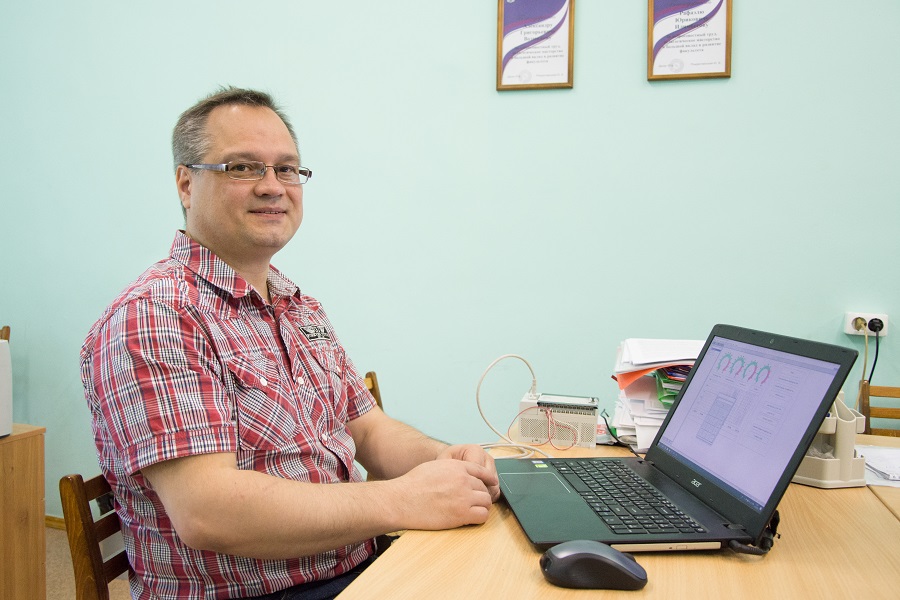Alternative energy saves the planet’s natural resources and is environmentally friendly. However, the challenge is to develop extremely reliable plants that could continuously generate energy. Scientists of South Ural State University have found a way to achieve this using wind turbines and hydrogen. Improved wind power plants are more reliable, and the energy received with their help is easier to transport and store. They can operate under various climatic conditions, including in the Arctic.
“A wind power plant is a source of energy, and it consumes a renewable resource such as the wind. Thanks to wind energy, we obtain electrical energy, and we are confronted with the task of maximizing the efficiency of this process. Another task is the accumulation of energy, its conservation for following use in the absence of the wind. Hydrogen will be consumed for this: we have combined a power plant with equipment for producing hydrogen, as well as electrical energy from hydrogen. In other words, this installation converts electricity into hydrogen, which we can store or even transport. From the same hydrogen, we conduct electricity back,” Andrei Martyanov says, associate professor at the Department of Power Stations, Networks and Power Supply Systems of the Polytechnic Institute of SUSU.

The conversion of electricity to hydrogen occurs through electrolysis, then the hydrogen is placed in special containers, which are stored until the moment when the consumer will require electricity. The reverse process of getting energy from hydrogen occurs due to an electrochemical reaction in which hydrogen interacts with oxygen, electricity and thermal energy are generated. By the end of 2019, scientists plan to complete work on the creation of a digital twin of a wind turbine.
Currently, there are similar wind-hydrogen complexes in the world, however, the development of scientists from the South Ural State University obtains several advantages. To be specific, the wind power installation is characterized by independence from the direction of the wind, superior efficiency, autonomy and reduced level of infrasound, which makes it safe in relation to the surrounding working personnel. In addition, the hydrogen part of the complex is an all-climatic installation, and therefore it can be used in difficult weather conditions, and at the moment the design of the wind-hydrogen energy complex is being improved with a view to its use in the Arctic.
.jpg)
Wind turbines for the Arctic will become more reliable
Another project of SUSU scientists is also aimed at providing energy to the Arctic territory. One of the consumers of electricity in the Arctic is navigation facilities, military facilities, as well as stations of oil companies. Conducting electricity to those regions demands significant financial costs, and wind power in this regard is the best solution. Therefore, the cost of 1 kilometer of a power line can be from 1 to 4 million rubles. For remote facilities, the cost of developing such a line, as well as the cost of its maintenance in harsh climates, will be extremely high. At the same moment, the cost of a wind turbine is relatively comparable to 1 kilometer of a power line, and its service life can achieve 35 years.
“The key problem of using wind turbines in the Arctic is that their designs may not withstand the large wind load that exists in the Arctic. In other words, with strong gusts of wind, the destruction of the blades or overheating of the generator can occur. To prevent these negative aspects, we have developed a braking system for a wind power installation. It monitors three parameters: the speed of rotation of the wind wheel, the temperature of the generator and vibrational vibrations throughout the structure. If any of the parameters are outside the suitable range, the braking system is activated and prevents the wind turbine. As soon as all values return to normal, it starts working again. Like so, we exclude the failure of the wind turbine under severe weather and climate conditions, but at the same time we provide stable power supply to consumers,” says Evgeny Sirotkin, junior researcher at the SUSU International Innovation Alternative Energy Center.
.jpg)
The braking system consists of three essential units, including an electronic unit that monitors the status of three parameters; a drive unit driving the actuators of the braking mechanism; as well as a brake unit that brakes the rotor of the wind turbine. Scientists have developed a mathematical and computer model of this braking system. The computer model can be used by developers of braking systems for any type and types of wind power plants around the world. Its essential purpose is to simplify and accelerate the process of designing and optimizing the braking system of wind power plants.
Currently, the computer model is patented in the form of a software package (No. 2019615727).




